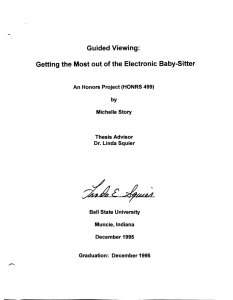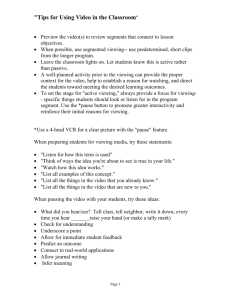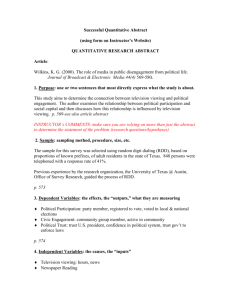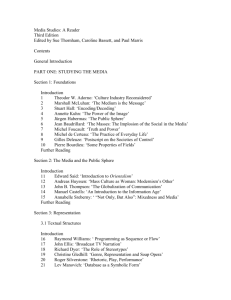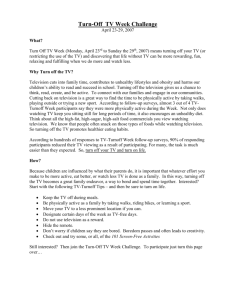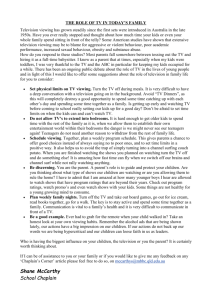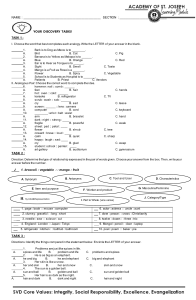Impact of Visual Media on Learning
advertisement
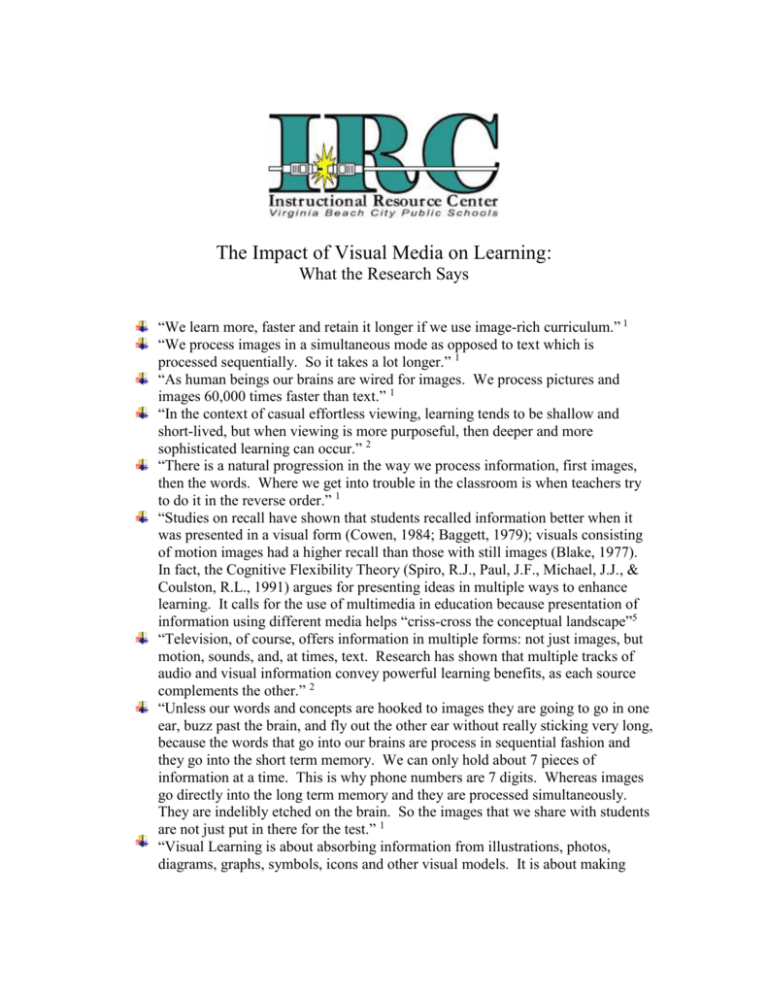
The Impact of Visual Media on Learning: What the Research Says “We learn more, faster and retain it longer if we use image-rich curriculum.” 1 “We process images in a simultaneous mode as opposed to text which is processed sequentially. So it takes a lot longer.” 1 “As human beings our brains are wired for images. We process pictures and images 60,000 times faster than text.” 1 “In the context of casual effortless viewing, learning tends to be shallow and short-lived, but when viewing is more purposeful, then deeper and more sophisticated learning can occur.” 2 “There is a natural progression in the way we process information, first images, then the words. Where we get into trouble in the classroom is when teachers try to do it in the reverse order.” 1 “Studies on recall have shown that students recalled information better when it was presented in a visual form (Cowen, 1984; Baggett, 1979); visuals consisting of motion images had a higher recall than those with still images (Blake, 1977). In fact, the Cognitive Flexibility Theory (Spiro, R.J., Paul, J.F., Michael, J.J., & Coulston, R.L., 1991) argues for presenting ideas in multiple ways to enhance learning. It calls for the use of multimedia in education because presentation of information using different media helps “criss-cross the conceptual landscape”5 “Television, of course, offers information in multiple forms: not just images, but motion, sounds, and, at times, text. Research has shown that multiple tracks of audio and visual information convey powerful learning benefits, as each source complements the other.” 2 “Unless our words and concepts are hooked to images they are going to go in one ear, buzz past the brain, and fly out the other ear without really sticking very long, because the words that go into our brains are process in sequential fashion and they go into the short term memory. We can only hold about 7 pieces of information at a time. This is why phone numbers are 7 digits. Whereas images go directly into the long term memory and they are processed simultaneously. They are indelibly etched on the brain. So the images that we share with students are not just put in there for the test.” 1 “Visual Learning is about absorbing information from illustrations, photos, diagrams, graphs, symbols, icons and other visual models. It is about making sense of complex information quickly—literally able to comprehend ideas at a glance.”3 “People generally remember about twice as much when they see and hear something, than when they only see or hear it.” 2 “…Thus children’s viewing of educational television has been shown to support significant and lasting learning gains, while too much viewing of other types of programming may be associated with a lack of academic achievement.” 2 “More powerful than the still images, we have the option of bringing educational videos into the classroom.” 1 “Further support for the learning benefits of television’s “mixed message” can be found in Howard Gardner’s theory of multiple intelligences. Television’s several modes provide multiple entry points into content, and thus offer greater accommodation to the many intelligences found in a diverse group of students.” 2 “A long history of research clearly shows, the educational value of visual media is positive and significant. While the format, delivery channels, and storage options may change, video is now and will continue to be and effective, engaging and essential tool in our nation’s classrooms.” 2 “Long before children can read—or even speak many words—they are able to assimilate visual information with ease.”3 “Visual Learning is a powerful teaching tool, both for kids who are natural visual/spatial learners, and for children with limited language proficiency. In fact, by using Visual Learning strategies, we can increase the learning potential of all children.”3 “Educators agree that visual learning is an essential part of teaching comprehension, thinking, and writing. Visual texts engage both hemispheres of the brain and translate easily across cultures, education levels and age groups.”4 “Watching motion media about people and processes that otherwise are difficult to imagine and evidence is a great advantage of video technology.”5 Sources 1 Effective Teaching with Classroom Video. DVD. School Media Inc., 2004. 2 Education Department of the Corporation for Public Broadcasting. TELEVISION goes to SCHOOL: The Impact of Video on Student Learning in Formal Education. New York: EDC/Center for Children and Technology, January 2004. 3 Murphy, Stuart J. Stuart J. Murphy MathStart®. 07 Oct. 2004. Stuart. 03 Feb. 2005 < http://www.stuartjmurphy.com/visual.html 4 Cornish, Jim. "Visual Literacy: Making sense of complex information" Connected Newsletter February 2005: 18-19. 5 Nilakanta, Rema and Clifford J. Ehlinger. A Report on the Impact of Motion Media on Adult and K-12 Learning. Cedar Rapids, Iowa: National Film Market, September 2003.

